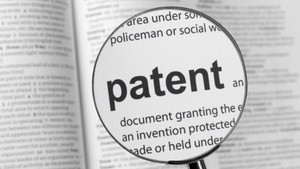A lot has happened in the biosimilars’ industry during 2009/2010.
Perhaps the most significant development was on 23 March 2010, when the US finally caught up with the rest of the world and signed into law the approval pathway for biosimilar biological products (Biosimilars Pathway), as part of the Patient Protection and Affordable Care Act, thus enabling the FDA to approve its first biosimilar, enoxaparin, in July 2010.
Biosimilar filgrastim was approved in the EU and has been put on the substitution list in Norway, and NICE in the UK included a biosimilar product for the first time in its assessment procedure.
A Phase I clinical trial of a biosimilar erythropoietin was also started in the US in patients with anaemia associated with chronic renal failure and chemotherapy.
The EMA has been busy drafting concept papers during 2009/2010 for European regulation of recombinant interferon beta and follicle stimulation hormone, as well as the long-anticipated guideline for monoclonal antibodies.
The WHO on the other hand has introduced a global guideline on similar biotherapeutic products, which is based on the same basic scientific principles as in the EU.
One negative development that has recently overshadowed the positive trend for biosimilar medicines, however, is the European Commission’s recent interpretation regarding the handling of duplicate marketing authorisations in the centralised procedure. Duplicate applications, which are needed to ensure greater availability of biosimilar medicines, are now not allowed for companies belonging to the same group. This could create a barrier to trade and slow down the market penetration of biosimilars.
Another negative development was the agreement by US congress of 12 years, instead of the initially proposed five years, of exclusivity for originator biopharmaceuticals, again delaying introduction of biosimilars to the market.
On the bright side, however, is the emergence of the developing markets as biosimilars’ opportunities.
The Indian government has been actively promoting biotechnology, providing significant funding during 2009/2010 and India is emerging as a major player in the biosimilars’ market. Many Indian generic companies already have expertise in developing and marketing versions of top-selling biotech drugs in India. Dr Reddy’s Laboratories, for example, launched the first biosimilar darbepoetin alfa in August 2010. Key Indian players include Ranbaxy, Wockhardt, Dr Reddy's Laboratories and Biocon.
Sandoz received marketing authorisation for the first ever Japanese biosimilar, recombinant human growth hormone somatropin. The precedent-setting decision further reinforces Sandoz's global leadership position in the rapidly-emerging Japanese market for biosimilars.
With legislation now in place in the US and further global and specific guidelines emerging, the future looks bright for the next year in the biosimilars’ market.
Related articles
Global guidelines for biosimilars
EU guidelines for biosimilars
Indian government encourages biosimilars
US healthcare reform
Phase I trial of a biosimilar erythropoietin
Sandoz receives approval for first-ever Japanese biosimilar
Second US biosimilars bill introduced: 12 instead of five years market exclusivity
References
EGA Press Release. EGA calls for a workable guideline for biosimilar monoclonal antibodies and a consistent scientific global approach towards biosimilar medicines. 2 September 2010.
EMA. Concept paper on the development of a guideline on similar biological medicinal products containing monoclonal antibodies. EMEA/CHMP/BMWP/632613/2009. 22 October 2009.
WHO. Guidelines on evaluation of similar biotherapeutic products (SBPs).








 0
0











Post your comment